by Deborah Lipp
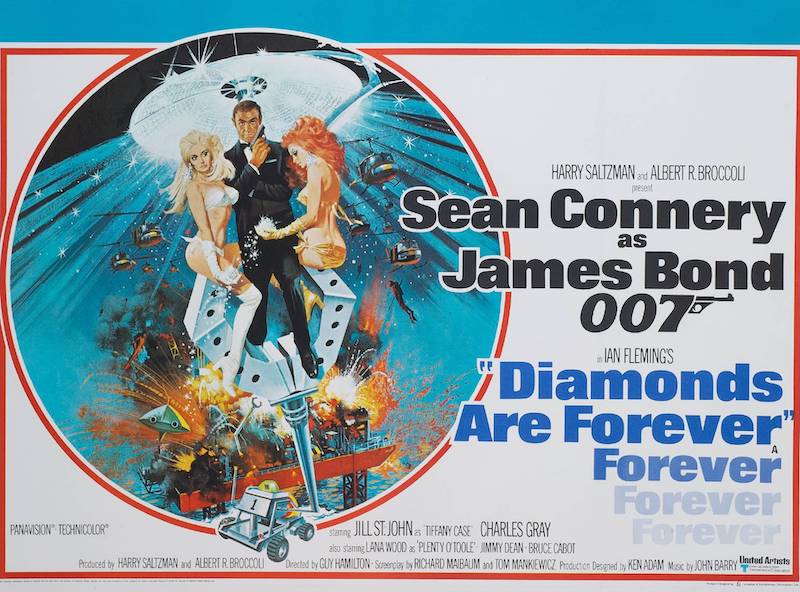
If you have clicked on this 50th anniversary commemoration of the James Bond movie Diamonds Are Forever, you are probably eager for a takedown. Diamonds Are Forever (1971) is a movie fans love to hate. But get your tomatoes ready to pelt me at me instead because I will be doing no such thing. I love this movie and I’m fully prepared to defend it...
Facts and Stats:
Diamonds Are Forever which opened in December 1971 was one of the top grossing films of 1971, alongside the musical Fiddler on the Roof, the coming-of-age drama Summer of 42, the western Billy Jack, and the Best Picture winning cop drama The French Connection. (An eclectic assortment.)
This is the seventh James Bond film, and the sixth (and final "official" one) with Sean Connery. Connery was miserable as James Bond and asked to be released from his contract after You Only Live Twice. His replacement, first-time actor George Lazenby, quit after one film, despite being a hit (On Her Majesty’s Secret Service was the 11th highest grossing film of 1969). Connery returned for one film only, for a then unheard-of one million dollars, which he donated to charity.
My book The Ultimate James Bond Fan Book uses a collection of surveys in order to gather data on James Bond movie rankings. It’s an amalgamation of surveys targeted at both Bond fans and general movie fans, and includes critics’ rankings, in order to get a range of views.
In the 2006 edition, Diamonds Are Forever was ranked a dismal 17th—fifth from the bottom. In the 2020 edition, its standings actually worsened; it’s now 22nd—fourth from the bottom. (2006 ranks the unofficial Never Say Never Again as absolute worst, that raspberry goes to Die Another Day in 2020.)
You Hate It, I Love It
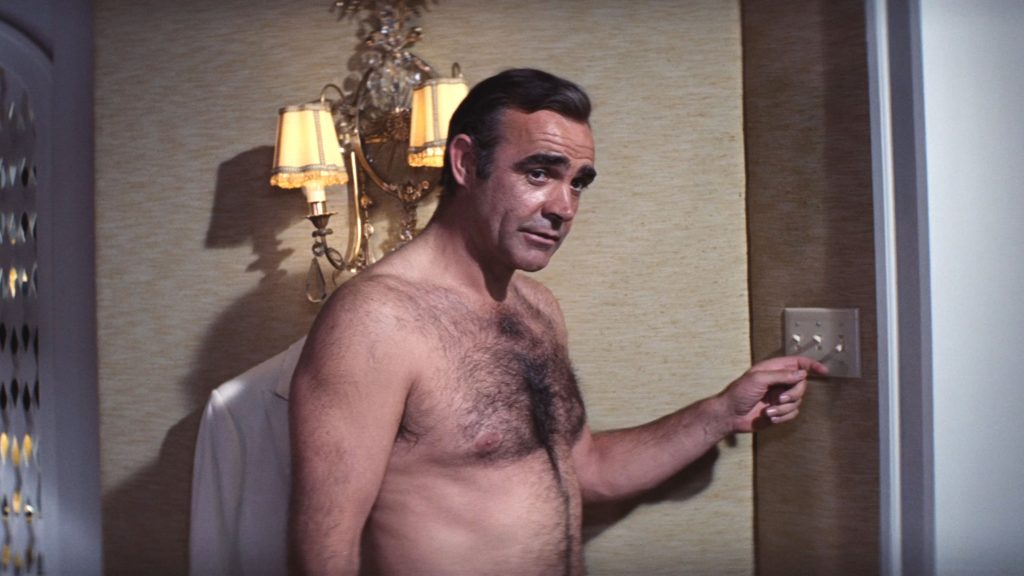
The biggest fan complaints are that Connery appears to be (a) paunchy, and (b) phoning it in, and that the movie is overall silly. Often, there are complaints about the ugliness of Las Vegas generally. There’s also a deeply conservative voice in Bond fandom, and among them, the idea of Blofeld disguised as a woman (and the general campiness of the film) is horrifying.
Context matters: It was a HUGE deal that Connery was back, he was enormously popular, and genuinely a sex symbol. A little paunch wasn’t going to change that. It’s also true that travel was simply less accessible in 1971, and Vegas was smaller (look at the strip in this film compared to today), so visiting it had more cachet at the time.
Some things I personally love about Diamonds Are Forever:
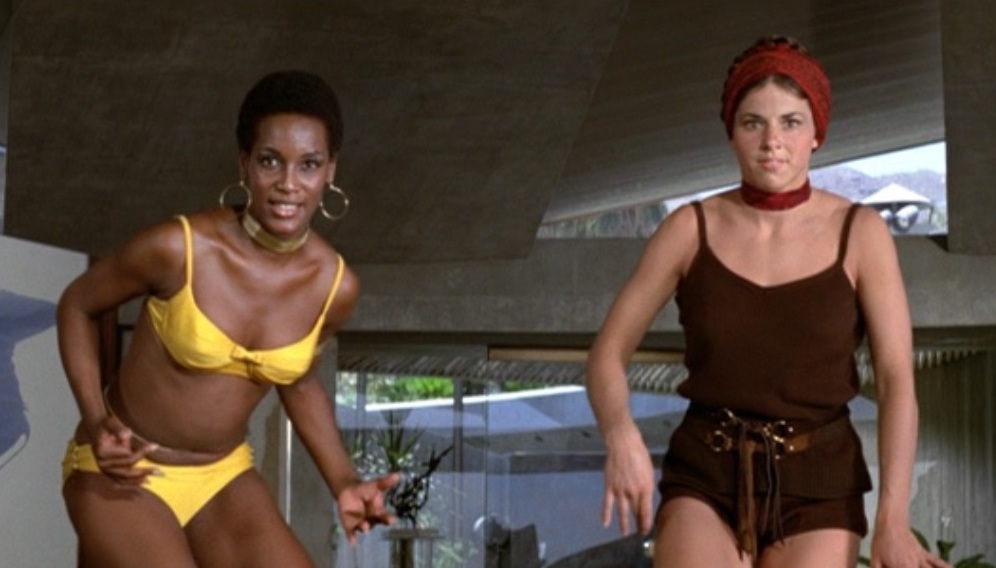
- Bambi and Thumper: I saw this movie in 1971, and let me tell you, audiences went wild for these women! Diamonds Are Forever is surely the gayest Bond film, having both Wint and Kidd and these two—maybe a couple, maybe not—as well as Blofeld in drag.
-
A powerful first few moments: Bond in Japan, violence, quick cut, Cairo, violence, quick cut, a beach, a beautiful woman, violence, quick cut. Beautiful construction, thrilling, a strong introduction.
-
An interesting smuggling plot that takes us through the stages from the mining operation, to a “little old lady” in Holland, to London, and finally the U.S. We see the operation being shut down, with smugglers at each stage being killed by the mysterious and frightening…
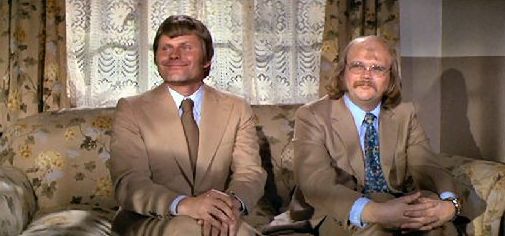
-
Wint and Kidd. We can object to Ian Fleming’s homophobia, and the use of a gay couple as code for villainy, but these are just great characters. Bruce Glover (father of Crispin) is particularly funny and creepy. The couple manages to be both campy and really dangerous.
-
A brutal fight scene in a glass elevator—one of the best hand-to-hand combat scenes in the franchise.
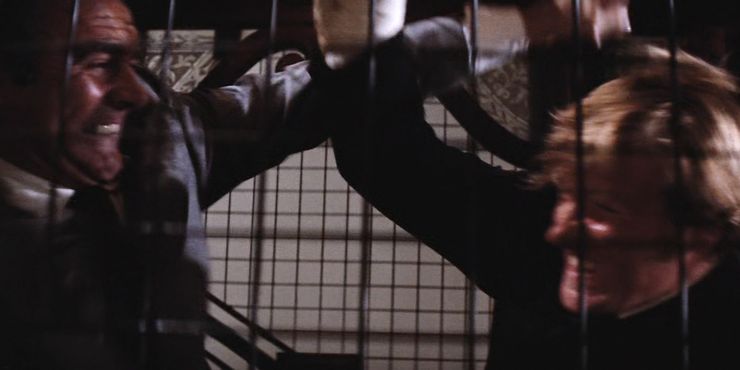
I could go on—the set design, editing, and score are all commendable, some of the witticisms are delightfully memorable, Jill St. John is a joy, the near-death by cremation is heart-stopping: There’s just a lot of good stuff here that rarely gets recognized.
I love Charles Grey as Blofeld. Everything we know about the character is that he’s evil, brilliant, and just a wee bit fey, letting others do his dirty work while he pets a pretty cat. Grey is all of these things, as well as a smug prick—I think he’s just right. It’s tough guy Telly Savalas, in the previous movie, who was all wrong for the role (and don’t get me started on Christoph Waltz!).
And, yes, things fall apart. Most of the fights end when the director feels like it’s time for them to end. Bambi and Thumper stop fighting back, as does Blofeld in the pre-titles sequence (which is a mess, not to mention a muddy one). With the exception of the elevator, most fights are highly choreographed and cartoonish. (Movie fights are always choreographed—but should rarely look like they are) Tiffany Case (Jill St. John) is great for two-thirds of the movie, and rewritten as a ditz in the final battle. Two fights—the mud and the moon buggy chase—make no sense at all: It’s like a grand battle between a feather and a potato. It’s just nonsense.
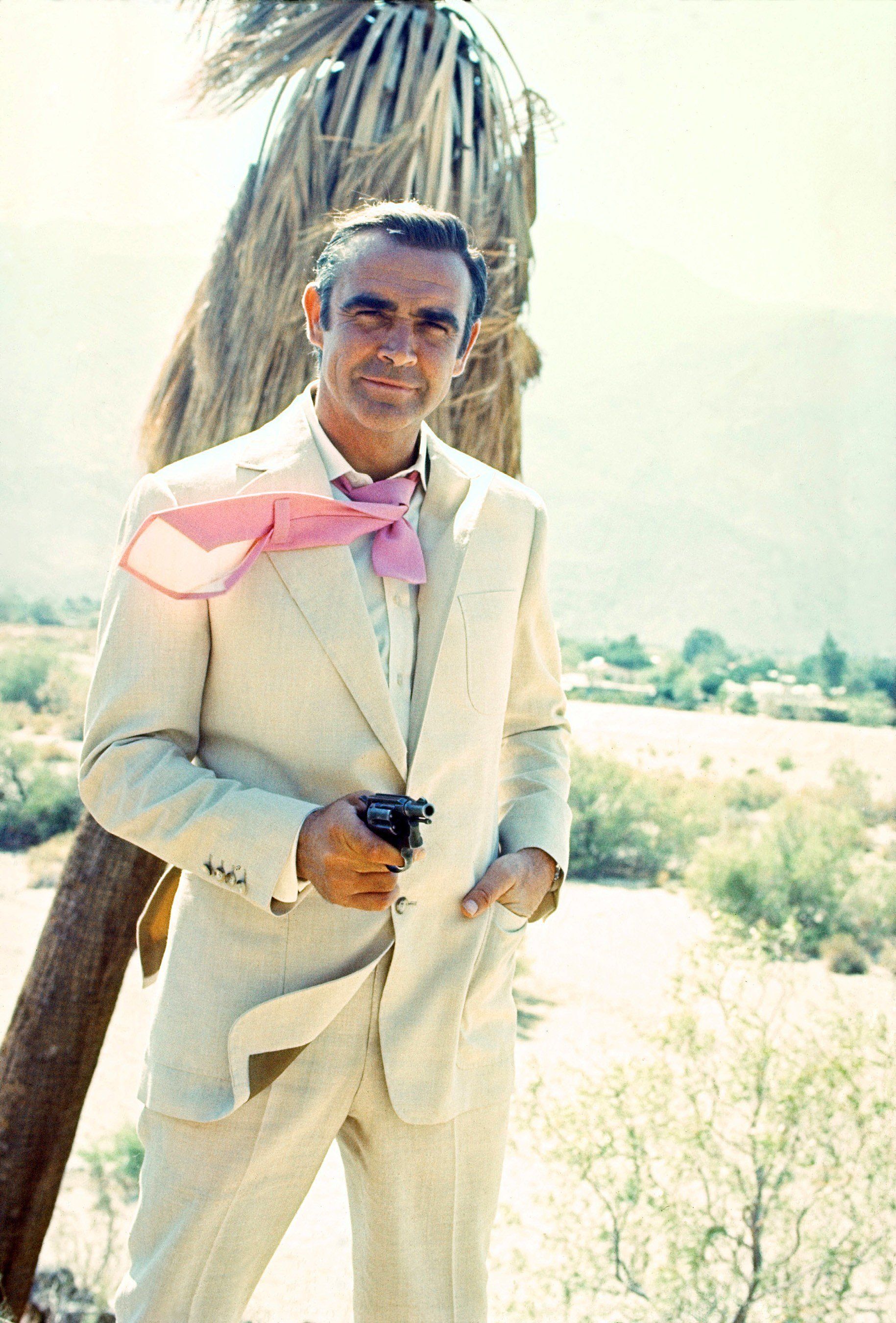
In even the best Bond movies, there are scenes that come apart on examination; in even the worst ones, there’s a wonderful scene or moment somewhere. There’s a bit of math involved—how much is great, how much bad? When I look at Diamonds Are Forever, the math favors a better reputation.
It’s also personal for me—this is the first Bond movie I saw on first-run in the theater, when I was ten years old. This is the Bond I fell passionately in love with. Nothing diminishes that.
Some Random Trivia
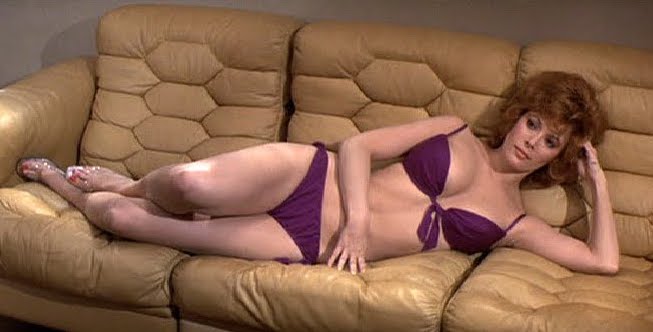
-
Jill St. John had just introduced a branded line of wigs which her contract allowed her to introduce. This is why she wears three different ones in her opening scene.
-
In the final battle on the oil rig, an assistant set off real explosives during rehearsal, so director Guy Hamilton quickly began filming. The sequence lacks a lot of intended camera angles as a result.
-
The novel has a horse-racing angle, and opens in Saratoga Springs, where a jockey is killed by Wint and Kidd at the Saratoga mud baths. This appears to be the impetus for the strange and unsatisfying mud bath scene in the pre-titles sequence.
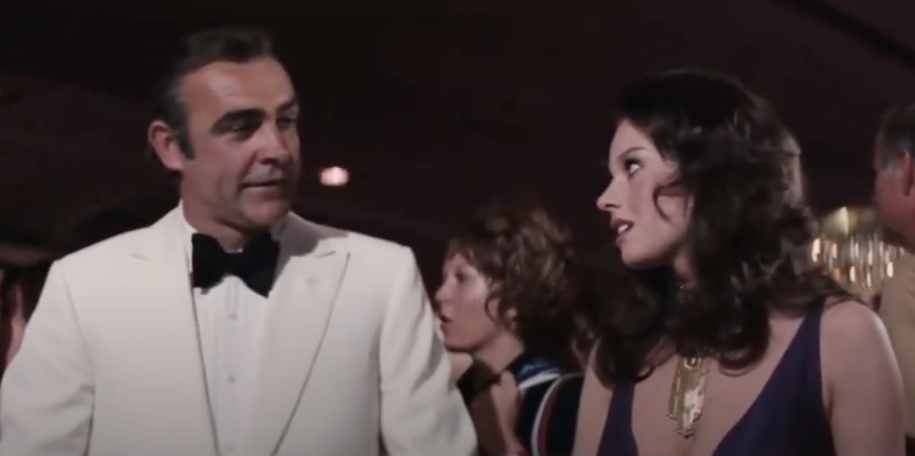
-
This is the only monogamous Bond movie prior to the Daniel Craig era. Bond intends to sleep with Plenty O’Toole, but she is killed before he gets a chance.
-
Speaking of Plenty, she is played by Lana Wood, younger sister of Natalie Wood. Lana played the younger Natalie in The Searchers.